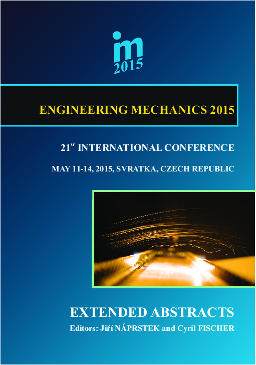Proceedings Vol. 21 (2015)

ENGINEERING MECHANICS 2015
May 11 – 14, 2015, Svratka, Czech Republic
Copyright © 2015 Institute of Theoretical and Applied Mechanics, Academy of Sciences of the Czech Republic, v.v.i., Prague
ISSN 1805-8248 (printed)
ISSN 1805-8256 (electronic)
list of papers scientific commitee
pages 122 - 123, full text
For the needs of high-performance steam turbines producer the data of a blade section measurement have been analyzed in detail by experimental and numerical approach. The blade section is used on prismatic blades in high and medium pressure steam turbine parts. The linear blade cascade was tested at four pitch/chord ratios at two different stagger angles. The blade cascade was tested under two levels of Reynolds number in the range of output izentropic Mach numbers from 0.4 to 0.9. The inlet of the test section was measured pitch-wise by five-hole probe to determine the inlet flow angle. The free stream turbulence of inlet flow was determined of 2.5% what is very close to the operating conditions on first high pressure stages. Two-dimensional flow field at the center of the blades was traversed pitch-wise downstream the cascade by means of a five-hole needle pressure probe to find out the overall integral characteristics. The blade loading was measured throughout surface pressure taps at the blade center. An in-house code based on a system of Favreaveraged Navier-Stokes equation closed by non-linear two-equation EARSM k-ω turbulence model was adopted for the predictions. The code utilizes an algebraic model of bypass transition valid both for attached and for separated flows taking into account the effect of free-stream turbulence and pressure gradient. Results are presented by integral characteristic in means of kinetic energy loss coefficient and velocity or pressure distribution in the blade wakes or on the blade surface. In this article, the effect of investigated criteria and comparison of experimental and numerical approach are presented and discussed.
back to list of papers
Text and facts may be copied and used freely, but credit should be given to these Proceedings.
All papers were reviewed by members of the scientific committee.

 Powered by
Imce 3.20 © 2023, Pavel Formánek, Institute of Thermomechanics AS CR, v.v.i. [generated: 0.0119s]
Powered by
Imce 3.20 © 2023, Pavel Formánek, Institute of Thermomechanics AS CR, v.v.i. [generated: 0.0119s]